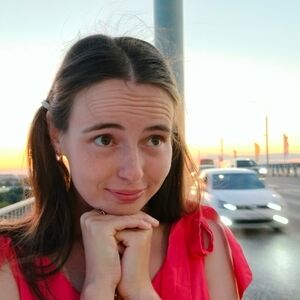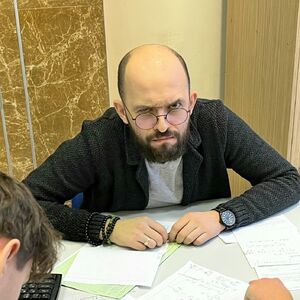summary (1137464)
Текст из файла
National Research UniversityHigher school of economicsZasypko Veronika VladimirovnaDevelopment of a numerical-analytical method and an algorithm for solvingthe optimal control problem (illustrated by an example of three-sectorinvestment economic model)SUMMARY of DISSERTATIONfor academic degree of Candidate of Sciencesin Applied Mathematics HSEAcademic superviser:Candidate of Physical-MathematicalSciences, Associate ProfessorShnurkov Petr ViktorovichMoscow - 2018Statement of the problemWe consider the so-called classical optimal control problem, where the time intervalis fixed and the boundary conditions are of the type of the fixed left and free rightends.
This statement of the problem is encountered in many specific control problems ineconomical and technical systems.The classical optimal control problem is posed asZ t1f (t, x(t), u(t))dt + l(x(t1 )) → min;B(x(·), u(·)) =t0ẋ − ϕ(t, x(t), u(t)) = 0u(t) ∈ U ∀t ∈ [t0 , t1 ],∀t ∈ T,(1)x(t0 ) = x0 ,where the state function x(·) ∈ P C 1 ([t0 , t1 ], Rn ) is the set of piecewise continuouslydifferentiable vector functions defined on [t0 , t1 ] and ranging in Rn , the control u(·) ∈P C([t0 , t1 ], Rr ) is the set of piecewise continuous vector functions defined on [t0 , t1 ] andranging in a given subset U ⊂ Rr (the set of admissible controls), and T ⊂ [t0 , t1 ] is theset of points of continuity of the control u(·).The main assertion on necessary conditions for extremum in this optimal controlproblem, which is called the Pontryagin maximum principle, is formulated as follows.An auxiliary function, called the Pontryagin function, is introduced:H(t, x, u, p, λ0 ) = (p, ϕ(t, x, u)) − λ0 f (t, x, u).Theorem.
Assume that (x∗ (·), u∗ (·)) is an optimal controlled process in theoptimal control problem (1) ((x∗ , u∗ ) ∈ strlocminP ), the functions f , ϕ are continuous ina neighborhood of the Cartesian product of the set Γx∗ = {(t, x∗ (t))|t ∈ [t0 , t1 ]} by theset U , the partial (Frechet) derivatives fx , ϕx are defined on this set and continuous atthe points of the set Γx∗ ,u∗ = {(t, x∗ (t), u∗ (t))|t ∈ [t0 , t1 ]}, and the function l is (Frechet)differentiable at the point x∗ (t1 ), (l ∈ D(x∗ (t1 ))).The the following conditions are satisfied:max H(t, x∗ (t), u, p(t), λ0 ) = H(t, x∗ (t), u∗ (t), p(t), λ0 ), t ∈ T,u∈U(2)or in other form,(p(t), ϕ(t, x∗ (t), u∗ (t))−f (t, x∗ (t), u∗ (t)) ≥ (p(t), ϕ(t, x∗ (t), u)−f (t, x∗ (t), u),t ∈ T, ∀u ∈ U,(3)1and the Lagrange multiplier λ0 can be set equal to 1. The function p(t), which is calledthe conjugate variable, is the unique solution of the Cauchy problem consisting of thedifferential equationṗ(t) = −ϕ∗x (t, x∗ (t), u∗ (t))p + fx (t, x∗ (t), u∗ (t))(4)and the boundary conditionp(t1 ) = −l0 (x∗ (t1 )).(5)Remarks on the theorem.The optimality condition of the form (2) or (3) is called the maximum condition,and the name of this fundamental assertion on necessary conditions for extremum originatesfrom this maximum condition.
Relation (4), which, analytically, is a system of differentialequations for the vector function p(t), is called the conjugate equation. The boundaryconditions to this equation are called the transversality condition. In this problem, thetransversality condition is meaningful only at the point t = t1 , and the correspondingcondition at the point t = t0 is not informative and not included in the system of necessaryconditions for extremum.The maximum condition for the Pontryagin function (2) plays the key role in thesystem of necessary conditions for extremum and determines the general structure of theoptimal control when the problem is solved.
In the most widely used standard version ofthe problem, the Pontryagin function linearly depends on the control u ∈ U . Let Q(t)denote the coefficient of u ∈ U in the formula for the Pontryagin function. In this case, thefunction Q(t) explicitly depends on the conjugate variable p(t). If one assumes that theset of admissible controls is the interval U = [u0 , u1 ] ⊂ R, then the maximum conditionimplies that the optimal control u∗ (t) has the following structure:u1if Q(t) > 0,u∗ (t) = u(0) (t), if Q(t) = 0,u0if Q(t) < 0.(6)The function u(0) (t) contained in (6) is called a singular control, which arises whenthe function Q(t) takes the zero value; in this case, the Pontryagin function is explicitlyindependent of the control u ∈ U .
The singular control cannot be determined from themaximum conditions, and there are special methods for determining such a control.2Further, Q(t) is the function determining the control. It follows from relation (6)that the behavior of this function mainly determines the form of optimal control.The main problem encountered when necessary conditions for extremum are usedin the maximum principle form is that it is required to analyze a complex system ofrelations consisting of several systems of mutually related differential equations and boundaryconditions.
In particular, the conjugate system of differential equations can depend on thecontrols u(t) and states x(t), and the differential constraint determining the variation inthe states x(t) depends on the controls u(t). Such a system can be solved analyticallyonly in special cases. Thus, it is necessary to develop methods for numerical analysis ofsystems consisting necessary conditions for extremum and the constraints of the originalproblem. In the present work, one of such methods is proposed.Degree of results availabilityIn the 1950s, the needs of applied disciplines (technology, economics, and others)stimulated the statement and consideration of a new class of problems, which were calledthe optimal control problems.
A necessary condition for extremum in problems of this classis the “maximum principle” formulated by L.S. Pontryagin in 1956, which was proved andfurther developed by him and his pupils and colleagues.The analytical difficulties related to applications of the maximum principle havebeen known since the time of construction of a method for solving the optimal controlproblems based on the maximum principle, and this results in a lot of scientific researchaimed at obtaining numerical solutions of various optimal control problems. Most of themused numerical methods for solving systems of differential equations contained in necessaryconditions and the constraints of the original problem.
In the present work, the optimalcontrol problem is analyzed in the whole with regard to the structure of possible controls.Objectives and goals of the researchObjective the research.To develop a numerical-analytical method and an algorithm for studying thesystem of necessary conditions in the classical optimal control problem based on themaximum principle.Goals of the research:1. To analyze the problem of optimal control of investments in a dynamical modelof three-sector economics based on the maximum principle and to reveal the generalstructure of the functions determining the optimal control.2.
To obtain analytic representations of the functions describing the state of the3system under study and of the conjugate variables in optimal control.3. To construct an algorithm and a program which permit numerically analyzingthe system of relations comprising necessary conditions and the constraints of the originalproblem and to obtain a numerical solution of this system, i.e., to obtain admissibleextremals.Relevance of the dissertationThe most famous result of the mathematical theory of optimal control underlyingsuch studies is the Pontryagin maximum principle. A method based on this theoreticalassertion was used in the classical works of mathematical economics and in several contemporaryinvestigations.Unfortunately, the method based on the use of the maximum principle veryseldom results in obtaining analytic solutions of the optimal control problems.
The directapplication of this method leads to several mutually connected systems of relations (necessaryconditions for extremum and the constraints of the original problem), and most often, itis impossible to obtain an analytic solution of such a system. Therefore, it is extremelyimportant to develop new numerical-analytical and numerical methods for analyzingsuch systems of relations and determining admissible extremals and optimal controlledprocesses. This dissertation research deals precisely with this problem.Personal contribution of the author to the development of the problemApplicant Zasypko V.V.
personally participated in the process of obtaining allbasic results of the dissertation and in preparing all publications on the topic of thedissertation.The results of this research were presented by Zasypko V.V. as reports at thefollowing scientific conferences, symposia, and seminars:1.
Scientific-Technical Conferences for students, post-graduate students, and youngscientists at MIEM and MIEM NRU HSE in 2011, 2012, 2013, and 2014;2. All-Russia Symposium on Applied and Industrial Mathematics. Autumn OpenSession (Sochi, September 2011);3. All-Russia Conference “Applied Probability Theory and Theoretical Informatics”(Moscow, April 2012);4. International Conference “ Probability Theory and Its Applications” dedicatedto B.V.
Gnedenko on the occasion of his 100th birthday (Moscow, June 2012);5. Seminar “Approximation Theory and Theory of Extremum Problems”, Departmentof General Control Problems, Faculty of Mechanics and Mathematics, MSU; the seminar4leader – Prof. Tikhomirov V.M. (Moscow, October 2012);6. XXXI International Seminar on Stability Problems for Stochastic Models (Moscow,April 2013);7. Scientific-Research Seminal “Optimal Control: Mathematical Theory and AppliedProblems” Department of Optimal control, Faculty of Computational Mathematics andCybernetics, MSU; the seminar leader – Corresponding member of RAS, Prof. Aseev S.M.(Moscow, February 2014).8.
Seminar “Analysis of Investment Projects"; Federal Research Center “Informaticsand Control”, Institute for System Analysis RAS; the seminar leader – doctor of economicsciences, Livshits V.N. (Moscow, June 2016).9. Seminar “Approximation Theory and Theory of Extremum Problems”, Departmentof General Control Problems, Faculty of Mechanics and Mathematics, MSU; the seminarleader – Prof.
Tikhomirov V.M. (Moscow, October 2016).Description of the research methodologyThe following mathematical methods are used to solve the problem posed above.1. General methods of the optimal control theory .2. Methods of the theory of differential equations.3. Analytical methods of the classical mathematical analysis.4. Methods of numerical analysis.The developed numerical-analytical method was realized as an example of analysisof the optimal control problem in a closed dynamical model of three-sector economics.In this model, the states are functions of funds (specific capital) in the sectors of themodel, the control parameter is a function which is the investment fraction of the majorfund lending sector in the total volume of investments. Mathematically, this problemis a classical optimal control problem on a prescribed finite time interval with mixedcriterion functional, differential constrains, the fixed left end of the trajectory, and severalconstraints on the control.
Характеристики
Тип файла PDF
PDF-формат наиболее широко используется для просмотра любого типа файлов на любом устройстве. В него можно сохранить документ, таблицы, презентацию, текст, чертежи, вычисления, графики и всё остальное, что можно показать на экране любого устройства. Именно его лучше всего использовать для печати.
Например, если Вам нужно распечатать чертёж из автокада, Вы сохраните чертёж на флешку, но будет ли автокад в пункте печати? А если будет, то нужная версия с нужными библиотеками? Именно для этого и нужен формат PDF - в нём точно будет показано верно вне зависимости от того, в какой программе создали PDF-файл и есть ли нужная программа для его просмотра.
















